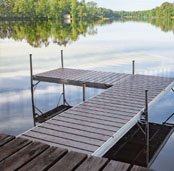
Bolg

Seawalls in Gulf Coast Communities: A Decade of Growth and Innovation
The Gulf Coast, with its stunning beaches and vibrant ecosystems, is a beloved destination for millions. However, the region faces significant challenges from coastal erosion, rising sea levels, and increasingly severe weather events. Over the past decade, seawalls have become essential tools for protecting Gulf Coast communities, evolving in design and implementation to meet modern needs.
The Need for Seawalls
As climate change accelerates the impacts of storms and flooding, many Gulf Coast communities have recognized the urgent need for effective coastal protection. Traditional seawalls have long served as barriers to erosion and storm surges, but their limitations have prompted a shift toward more innovative solutions. The last decade has seen a marked increase in the construction and improvement of seawalls, driven by both necessity and community advocacy.
Growth in Seawall Construction
In the past ten years, investment in seawall construction has surged across Gulf Coast states, fueled by a combination of federal funding, state initiatives, and local efforts. Communities that once relied on natural barriers have turned to engineered solutions to safeguard homes, businesses, and infrastructure.
Key Factors Driving Growth:
1. Increased Awareness: Growing public awareness of climate change and its local impacts has led to greater demand for protective measures. Residents are advocating for stronger seawalls as a means of preserving their communities.
2. Funding Opportunities: Federal programs, such as those offered by the Federal Emergency Management Agency (FEMA) and the U.S. Army Corps of Engineers, have provided critical funding for seawall projects. This financial support has enabled communities to invest in more robust coastal defenses.
3. Technological Advances: Innovations in materials and engineering have allowed for the construction of more effective and environmentally friendly seawalls. These advancements help address the limitations of traditional designs, making them more resilient against storms and sea-level rise.
Sustainable Solutions: The Shift Toward Eco-Friendly Seawalls
While traditional seawalls serve a vital purpose, many Gulf Coast communities have begun to adopt more sustainable designs. The trend toward integrating natural elements—such as vegetation and living shorelines—into seawall construction is gaining momentum. These eco-friendly solutions not only protect against erosion but also support local wildlife and enhance coastal ecosystems.
Benefits of Sustainable Seawalls:
Erosion Control: Natural elements help absorb wave energy, reducing the impact on seawalls and adjacent shorelines.
Biodiversity Support: Living shorelines create habitats for fish and other marine life, fostering healthier ecosystems.
Community Aesthetics: Incorporating greenery and natural features can enhance the visual appeal of coastal areas, making them more inviting for residents and visitors alike.
The Future of Seawalls in Gulf Coast Communities
As Gulf Coast communities continue to grow and adapt to changing environmental conditions, the future of seawalls will be shaped by several key trends:
1. Comprehensive Coastal Management: Integrated planning that combines seawalls with other protective measures—like dune restoration and wetland preservation—will become increasingly common.
2. Community Involvement: Local residents will continue to play a crucial role in advocating for seawall projects, ensuring that solutions reflect community values and priorities.
3. Regulatory Changes: As awareness of climate impacts deepens, regulations governing coastal development may evolve, promoting sustainable construction practices for seawalls and other protective structures.
4. Research and Development: Ongoing research into coastal engineering and ecosystem dynamics will lead to further innovations in seawall design, making them more effective and environmentally friendly.
Conclusion
The growth of seawalls in Gulf Coast communities over the past decade reflects a broader commitment to protecting lives, property, and ecosystems from the impacts of climate change. As we look to the future, the integration of sustainable practices and community engagement will be vital in ensuring that these structures not only serve their intended purpose but also contribute to the health and resilience of the coastal environment. By embracing innovative solutions, Gulf Coast communities can navigate the challenges ahead and safeguard their cherished coastlines for generations to come.
Contact info
- Phone: +1 (941) 896-8500
- Email: info@coastalseawallsinc.com
Our Services
©2025 Coastal Seawalls Inc . All Rights Reserved.




